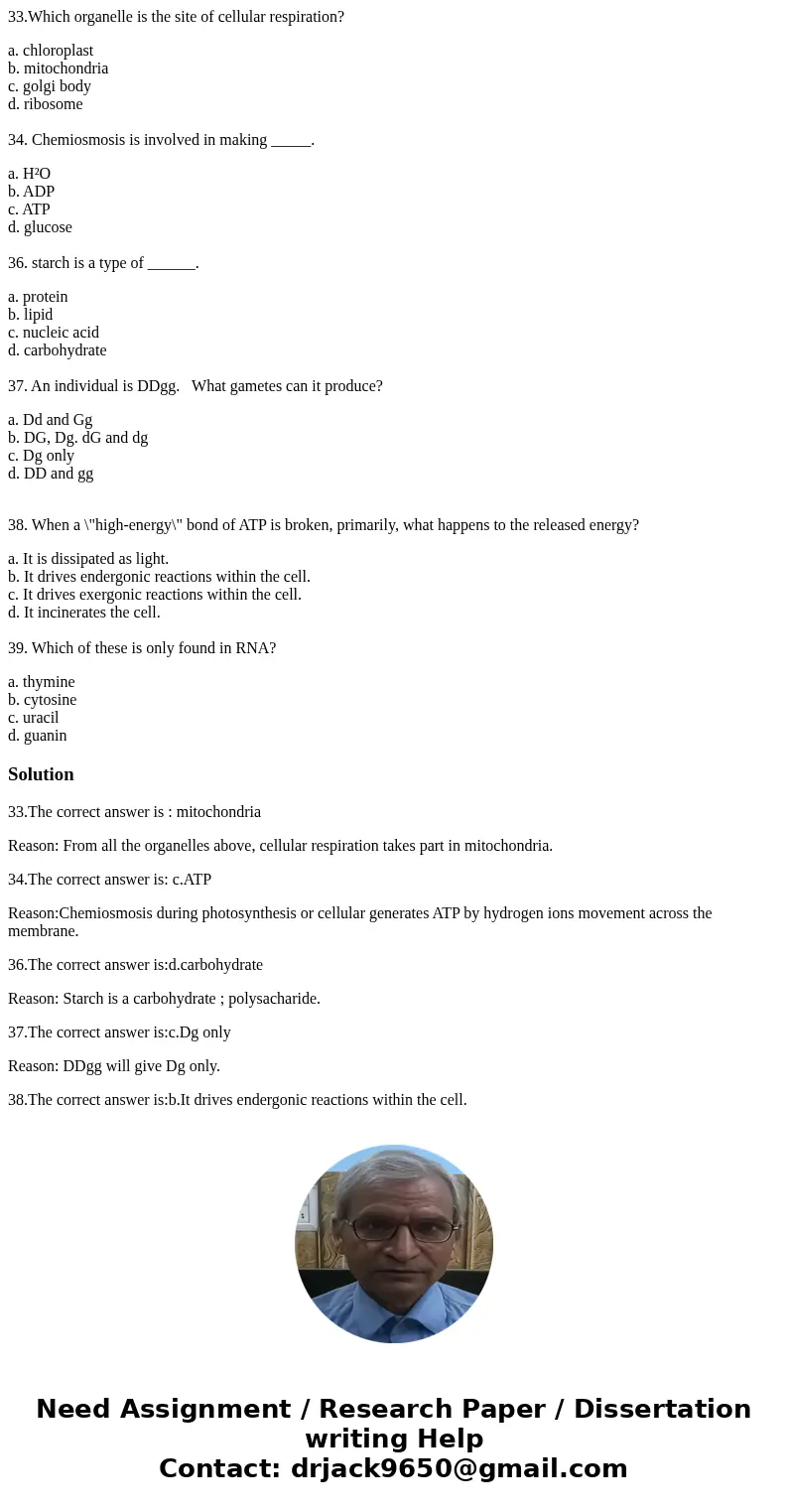33Which organelle is the site of cellular respiration a chlo
33.Which organelle is the site of cellular respiration?
a. chloroplast
b. mitochondria
c. golgi body
d. ribosome
34. Chemiosmosis is involved in making _____.
a. H²O
b. ADP
c. ATP
d. glucose
36. starch is a type of ______.
a. protein
b. lipid
c. nucleic acid
d. carbohydrate
37. An individual is DDgg. What gametes can it produce?
a. Dd and Gg
b. DG, Dg. dG and dg
c. Dg only
d. DD and gg
38. When a \"high-energy\" bond of ATP is broken, primarily, what happens to the released energy?
a. It is dissipated as light.
b. It drives endergonic reactions within the cell.
c. It drives exergonic reactions within the cell.
d. It incinerates the cell.
39. Which of these is only found in RNA?
a. thymine
b. cytosine
c. uracil
d. guanin
Solution
33.The correct answer is : mitochondria
Reason: From all the organelles above, cellular respiration takes part in mitochondria.
34.The correct answer is: c.ATP
Reason:Chemiosmosis during photosynthesis or cellular generates ATP by hydrogen ions movement across the membrane.
36.The correct answer is:d.carbohydrate
Reason: Starch is a carbohydrate ; polysacharide.
37.The correct answer is:c.Dg only
Reason: DDgg will give Dg only.
38.The correct answer is:b.It drives endergonic reactions within the cell.
Reason: The energy released by ATP hydrolysis is absorbed by molecules of the endergonic reactions within a cell.
39.The correct answer is: c.uracil
Reason: Uracil is present in RNA in place of thymine.


 Homework Sourse
Homework Sourse